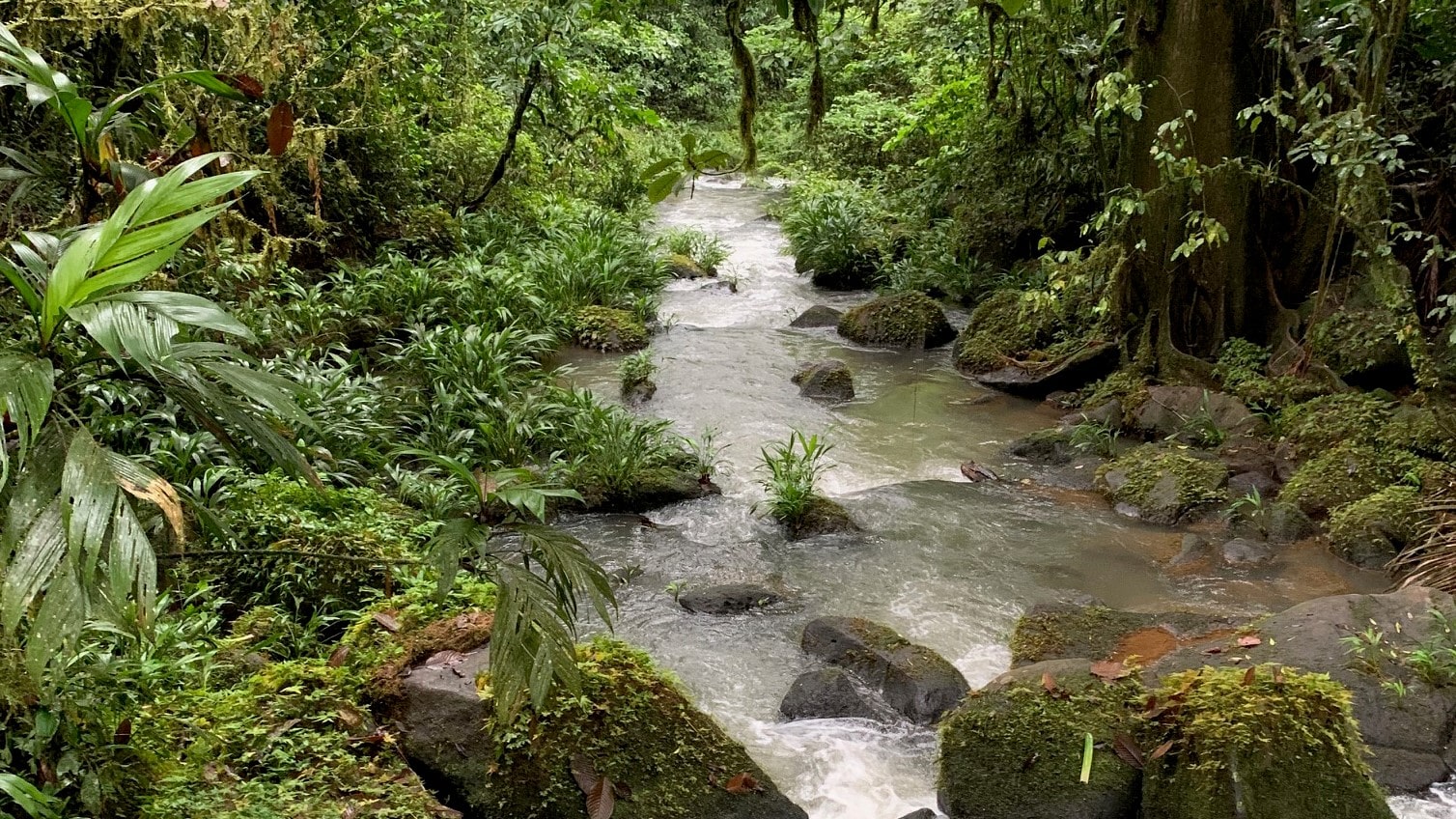Tropical Streams Reveal Climate Change Insights

It was still dark out at 5 a.m. when Marcelo Ardón started walking through the rainforest in Costa Rica to sample carbon dioxide – a greenhouse gas – from a stream. When he reached the water, he noticed an ocelot downstream, eating a dead otter. Before he could make a move for his camera, the wild cat had vanished.
For Ardón, an associate professor of forestry and natural resources at NC State University, keeping a keen eye out for animals, including venomous snakes, is just part of the job of studying the chemistry of tropical streams at La Selva Research Station in Costa Rica – a job that might sound like a vacation to some.
Ardón’s work helps explain scientific mysteries about the streams in Costa Rica’s rainforests, and the life they support. His work also offers insights into how these tropical systems will adapt as the climate changes. The Abstract spoke to Ardón about his discoveries about streams in Costa Rica, what it’s like to do research there, and why the findings could be important in a changing climate.
TA: How did you get started studying streams in Costa Rica?
Ardón: I grew up in Costa Rica. I loved being outside and playing in streams and rivers, and I wanted to be a marine biologist. I got a scholarship to come to the United States to study biology, but during a semester in a marine biology lab, I realized I got seasick on boats. So I switched to streams and wetlands. I started studying in Costa Rica for my Ph.D., looking at how high levels of phosphorus caused by volcanic activity impacted microbes, fungi and insects. I’ve been studying streams in Costa Rica for more than two decades.
TA: What’s it like to do research in a rainforest?
Ardón: The trees are really close together, so it tends to be dark inside the forest. It’s really muddy, and when you get to the stream, it’s also slippery. Often, it will be raining. I don’t even bother with raincoats there. You end up soaked from the sweat; not from rain.
TA: One of your studies looked at how these streams can become acidic, and what that means for insects that live there. What did you find?
Ardón: It rains all year round in this rainforest, but there is a slightly drier season where it rains less. During the transition from the dry-to-wet season, we have seen the pH of the streams drop down to levels like you’d see with acid rain. What we think is happening is that dead leaves and other organic matter will flush into the streams during the rainy period, creating carbonic acid as they decompose. When we compared streams with different acidity levels, we found that relatively smaller drops in pH didn’t have much of an effect on insects. The problem is that climate change could make these acidification events more common. If they are stronger, or longer in duration, they could have bigger impacts. Insects are at the base of the food web.
TA: Where is the carbon dioxide in these streams coming from?
Ardón: We know streams in the tropics emit a lot of carbon dioxide naturally. It’s created by decomposing litter, roots and organic matter in the soils. One of the questions is: Where is that carbon dioxide coming from? What we’ve found is that decomposition of organic matter in the stream itself contributes equally alongside decomposed material that moves into the stream through groundwater.
TA: Your latest work looked at high nitrogen in the streams. What have you learned?
Ardón: In these forests, there are many tree species that have a mutualism with microbes that grow on their roots. The microbes are able to take the nitrogen from the air, and convert it into a form that the trees and other plants can use. We found that years where nitrogen-fixing trees grew more were also years where the nitrogen concentrations in the stream were highest. We think that means that in years where conditions were good for them to grow, the trees also likely fixed more nitrogen, and they fixed more nitrogen than they needed, so it ended up in the stream.
However, we also saw that there were years we had a lot more rainfall, and the growth of the trees started to decline. With climate change, if we have a ton more of these extreme rain events, the trees are not going to do well, and the amount of nitrogen is going to be affected by those changes in precipitation.
TA: What does that mean for the role the trees could play in capturing carbon dioxide?
Ardón: If these forests are fixing their own nitrogen, and they also have more carbon dioxide because we are pumping it into the atmosphere, hypothetically, trees would be able to grow more, and sequester more carbon. But when you add precipitation into the mix, it’s a more nuanced story because the growth of the trees goes down when we have more extreme events. So, these tropical forests may not be able to sequester as much carbon.
Both of these studies show how changes that occur in the forests, to the trees and to the soils, have consequences for stream water chemistry, and the insects that live in them. People tend to study terrestrial and aquatic systems separately. These studies show how linked they are in a tropical rainforest.
The tropics are probably going to get hit really hard by climate change. It’s getting warmer and it’s already pretty warm there to begin with. There isn’t that much room in terms of the limits for trees, streams, and organisms in general.
- Categories:


